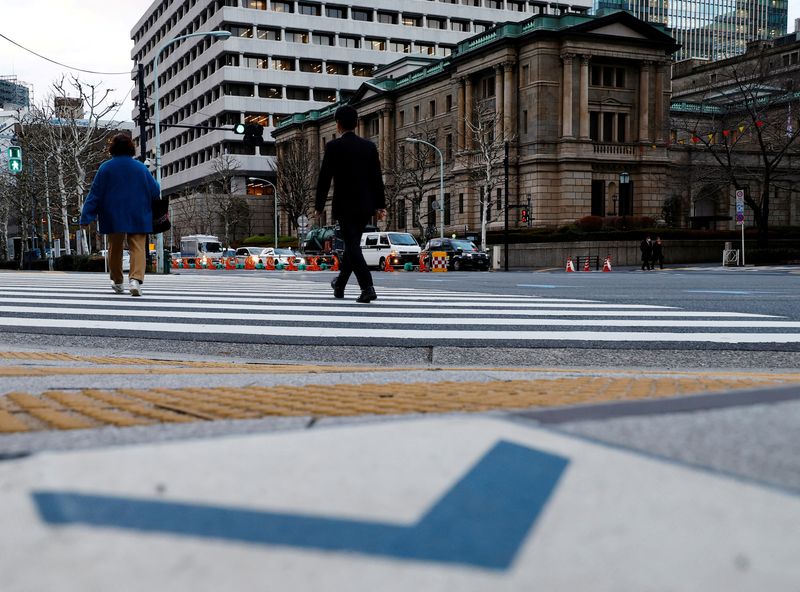By Takahiko Wada and Leika Kihara
TOKYO (Reuters) - Japan's exit from ultra-easy monetary policy would mark a "regime change" for its banking system as lenders compete for deposits in a move that could trigger massive shifts in fund flows, a former banking regulator said.
With inflation having exceeded its 2% target for well over a year, the Bank of Japan has dropped signs that it will end its negative interest rate policy and phase out other elements of its massive stimulus package in coming months.
Tokio Morita, former vice minister for international affairs at the Financial Services Agency (FSA), said he expects the BOJ to steer a smooth exit from negative rates, and avoid any sharp policy tightening that could upend Japan's banking system.
But financial authorities should not under-estimate the impact of Japan's shift away from decades of ultra-low interest rates, as it could cause major changes in the way financial institutions, depositors and borrowers act, he said.
As domestic lending turns profitable, financial institutions may start competing for deposits by offering higher interest including those lacking financial soundness - a move that could lead to excessive risk-taking, Morita said.
"The BOJ has suppressed not just short-term but long-term interest rates for a prolonged period. Loosening the grip would mark a regime change" for Japan's banking industry, he told Reuters in an interview on Friday.
"The priority for authorities would be to ensure the policy shift does not cause big shocks to markets and the financial system," Morita said.
Global debate on how the BOJ's policy shift could affect fund flows worldwide would also be "very important," he added.
Well-versed in global financial regulation, Morita took part in policymakers' efforts to contain the fallout from the collapse of Lehman Brothers in 2008.

As part of efforts to reflate growth and fire up inflation to its 2% inflation target, the BOJ has guided short-term interest rates at -0.1% and the 10-year bond yield around 0% since 2016.
The BOJ last year relaxed its tight control on 10-year bond yields and is likely to allow long-term rates to move more freely when it pulls short-term rates out of negative territory.